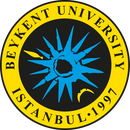
International Conference on Eurasian Economies
1-3 July 2014 – Skopje, MACEDONIA
Paper detail
Paper ID : 888
Status : Paper published
Language : English
Topic : Labor Economics and Migration
Presenter: Asst. Prof. Dr. Burulcha Sulaimanova
Session : 3A Sectoral Analysis
Worker’s Remittances and Poverty in Kyrgyzstan
Worker’s Remittances and Poverty in Kyrgyzstan
- Prof. Dr. Kamalbek Karymshakov (Kyrgyz-Turkish Manas University, Kyrgyzstan)
- Asst. Prof. Dr. Razia Abdieva (Kyrgyz-Turkish Manas University, Kyrgyzstan)
- Asst. Prof. Dr. Burulcha Sulaimanova (Kyrgyz-Turkish Manas University, Kyrgyzstan)
Abstract
This paper aims to evaluate the impact of internal and international remittances on poverty in Kyrgyzstan using household survey data for 2011. Following Adams and Cuecuecha (2010) two-stage multinomial logit model suggested by Bourguigon et al. (2007) is used. Methodology use instrumental variables to solve the selectivity bias issue and then estimates counterfactual expenditure of households. Households are classified as international remittance receiving, internal remittance receiving and remittance non-receiving. For evaluation of remittances impact on poverty counterfactual expenditures are compared with observed actual expenditure by household types. Expenditure level for 2011 for definition of national poverty line in Kyrgyzstan is used as the benchmark for poverty impact of remittances. Results show that international remittances considerably decrease poverty level. Per capita expenditure of international remittance receiving households would be lower than expenditure of poverty line for 2011, if they did not receive remittances. Internal remittance receiving households also would decrease expenditures, but it would still be higher than poverty line.
JEL codes: F24, I32
Karymshakov, Kamalbek, Abdieva, Razia, Sulaimanova, Burulcha (2014). "Worker’s Remittances and Poverty in Kyrgyzstan" in Proceedings of International Conference of Eurasian Economies 2014, pp.96-102, Skopje, MACEDONIA.
DOI: https://doi.org/10.36880/C05.00888




